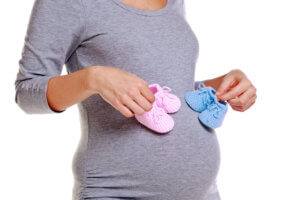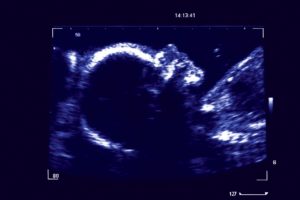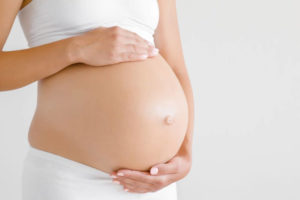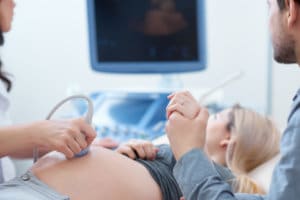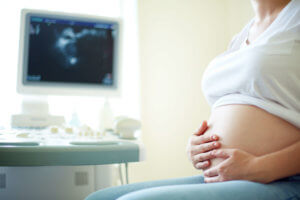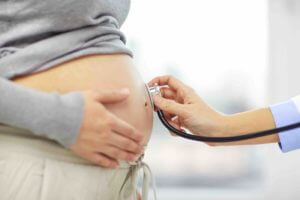During pregnancy and delivery, it is important to regularly check the condition of the mother and baby. CTG can be a great examination method for this, measuring the baby’s heart rate and recording the mother’s contractions. In this post, you’ll learn a lot about the CTG exam and how to use it.
Table of contents
What Is A CTG?
In addition to the ultrasound examination, cardiotocography – CTG for short – is standard in pregnancy monitoring and care. It is used especially in the last weeks of pregnancy and during delivery. With the help of the CTG device, the heartbeat of the unborn child has been measured as well as the labor activity of the expectant mother.
This method of examination is biophysical and not an invasive method of examination, accordingly, there is no intervention in the body.
CTG is used, among other things, to monitor the condition of the fetus. During the examination, the distance between two heartbeats of the unborn child is measured. This measurement is extrapolated to the frequency of the heart and output in a graph. The interpretation of the CTG requires some experience in interpretation.
How Does An Examination Proceed?
The CTG is recorded by two sensors, each of which is carefully fastened to the pregnant woman’s abdomen with a belt. An ultrasound microphone, called a Doppler ultrasound transducer, is used to measure and record the heart rate.
A pressure sensor also makes it possible to determine the contractions of the uterus, from the tensions of the abdominal wall. Current versions of the devices can not only measure the baby’s heart rate but also display the movements of the unborn child. This makes it possible to assess the health of the fetus even better.
The measurements take place only through sensors that rest on the skin. Therefore, the examination is not associated with pain and is harmless for both mother and baby. CTG is one of the non-invasive methods of prenatal diagnostics and takes about 20-30 minutes.
Recording Of Heart Sounds
A special microphone called a Doppler ultrasound transducer is used to record the baby’s heart sounds. This microphone sends ultrasound signals that are reflected from the fetus’ heart. The ultrasound machine then receives these signals back.
If your doctor has speakers connected to the machine, then you can hear your baby’s heart sounds during the exam. This is an incredibly special moment for expectant mothers when they hear their baby’s heart beating for the first time.
New CTG machines can record a baby’s movements in addition to heart sounds. These special recording devices are called kinetocardiotocographs, or K-CTG for short. Through the recorded movements, the doctor can infer the state of health and assess how the baby is doing and whether it is receiving adequate care during delivery.
Recording Of Contractions
The recording of contractions succeeds through the contraction meter of a CTG device. With each contraction, the contracting uterus presses against the abdominal wall of the expectant mother. The CTG calculates the curve of the contractions from these measured tensions and thus determines the frequency and length of the contractions.
The CTG During Pregnancy
During pregnancy, most gynecologists perform a CTG from the 30th week of gestation to check the baby’s health and oxygen supply. If there is a high-risk pregnancy, for example in the case of gestational diabetes, premature labor or multiples, the examination is performed as early as the 25th week of pregnancy. If the due date is exceeded, an examination is also performed with the help of the CTG device.
CTG During Birth
The CTG is also used during childbirth because it can measure the frequency, length and strength of contractions. If the contractions are regular and strong, the doctor starts the examination by CTG.
If there are no abnormalities, the examination is completed as quickly as during pregnancy after about 30 minutes. After that, it is repeated every 2 hours to keep track of the contractions and the progress of the birth.
If the birth is in the expulsion phase, a CTG is usually written continuously. In this phase of the birth, the placenta or the umbilical cord may be poorly perfused, resulting in little blood and therefore oxygen reaching the baby. Such a lack of oxygen can be observed on the CTG by a falling heart rate.
The graphic output of the values provided by a CTG shows the doctor or midwife whether they need to intervene or whether everything is going well. In this way, they can prevent birth complications from occurring and a lack of oxygen in the baby is detected in time.
Often, if complications arise, an emergency cesarean section is performed. This is certainly not the ideal idea of a birth for expectant mothers. But the main thing is that the baby is born healthy and mother and child are well after birth.
If you have a high-risk pregnancy, it is possible that you will be connected to the CTG during the entire birth. This ensures that your baby receives sufficient oxygen during the birth.
The Data Obtained From The CTG
The data obtained from the examination must be interpreted correctly by doctors and midwives. To get an overview of the whole situation, it is important to look at the data obtained from the CTG together with other findings. A synopsis of all the examinations provides the best information about the health of the fetus.
If the values are different or less than optimal, there is a risk that somewhat inexperienced or untrained physicians, midwives, or obstetricians will interpret the results hastily or incorrectly. It is then possible that a cesarean section is preferred to natural birth, even though this should not have been necessary.
Nevertheless, the focus is on ensuring that the child is born healthy, and this can also be achieved with a C-section. Especially in the hands of experienced doctors and midwives, the CTG is a valuable method for checking the health of the baby and monitoring the labor activity of the expectant mother.

